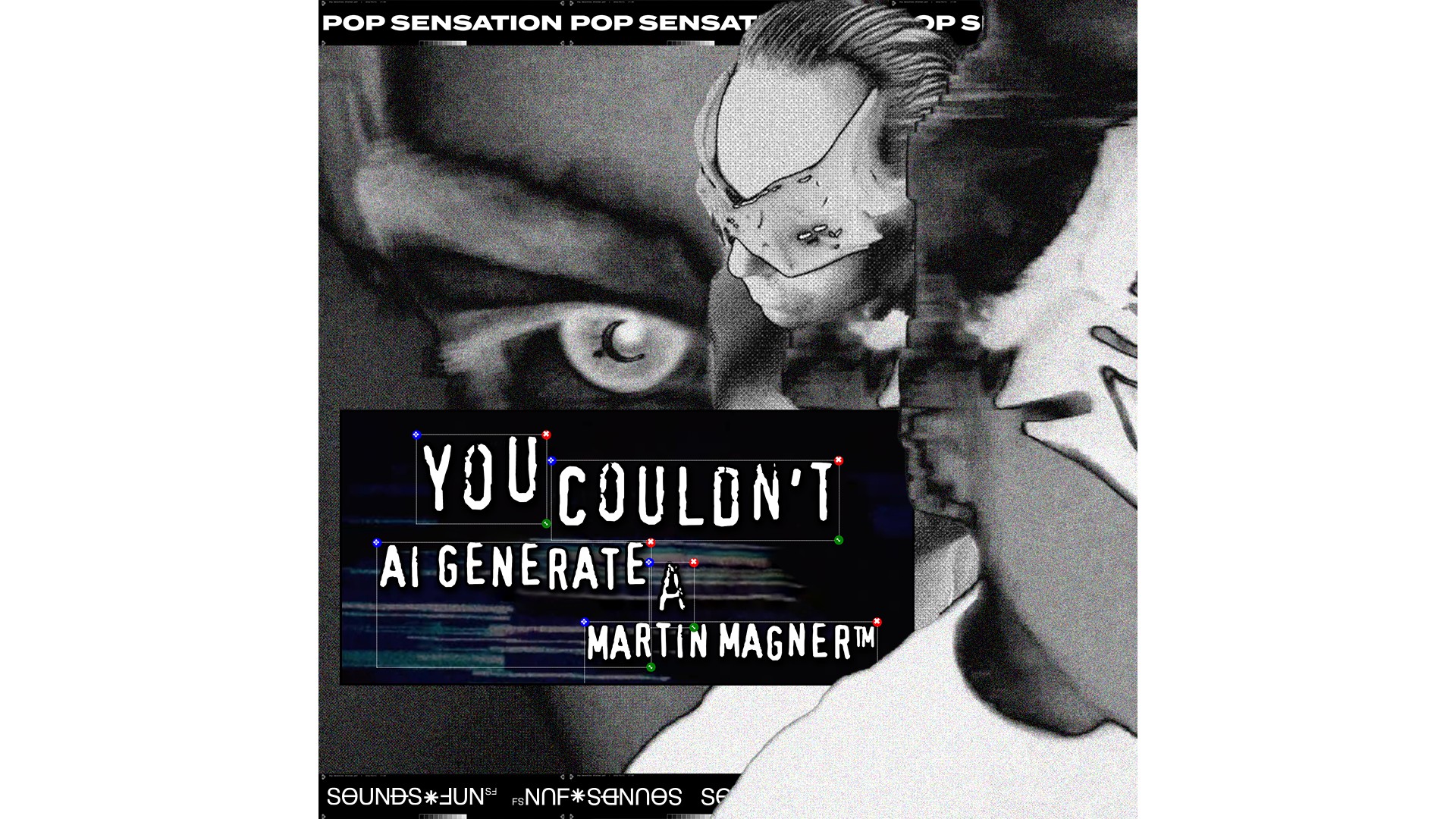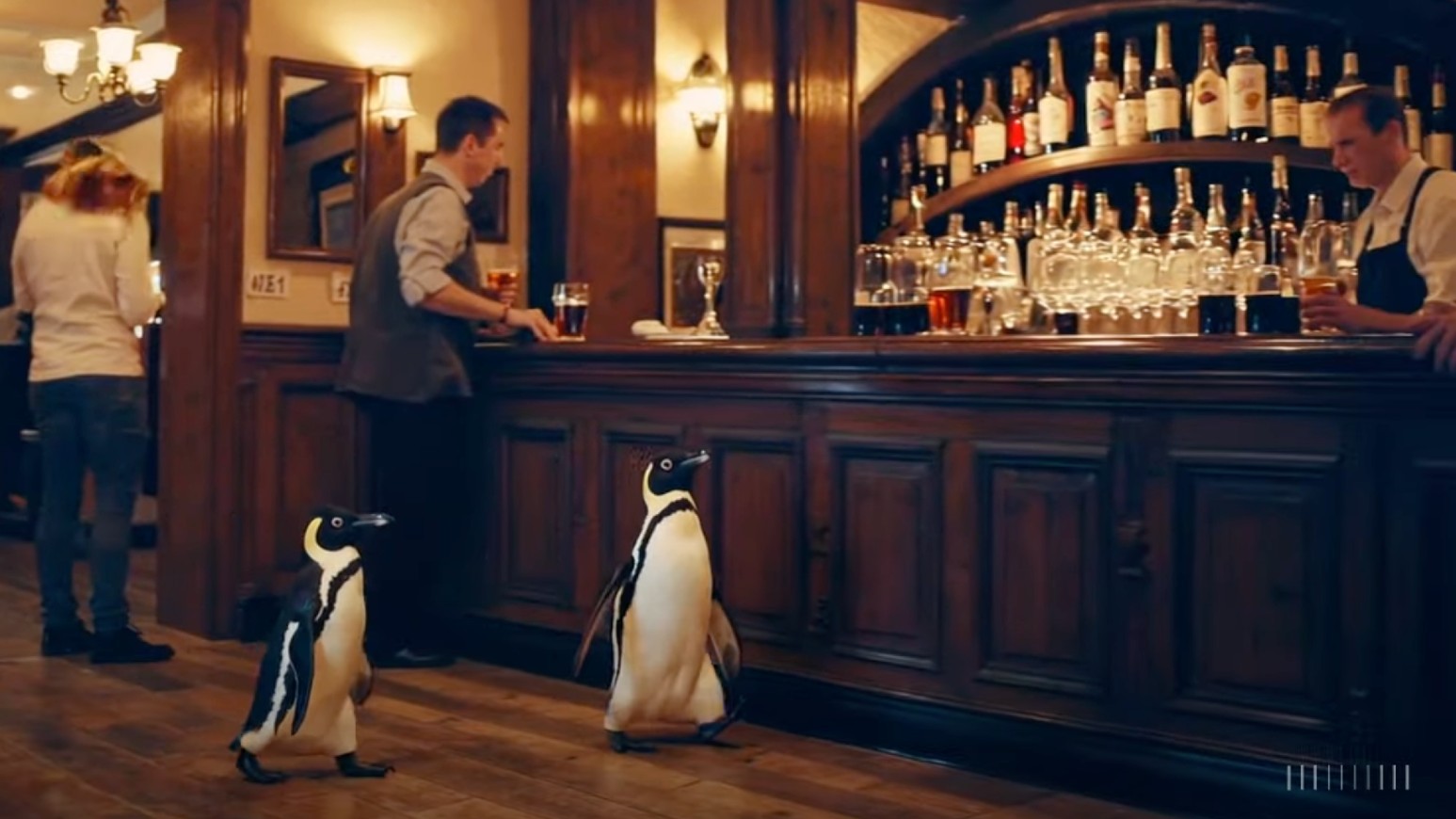
If you're looking to land your first design job, or make a career move in 2025, understanding how AI fits into creative work isn't optional any more: it's essential. The good news? You don't need to be a technical expert. What matters most is how you think about and work with AI tools. Before we go any further we should say, this is according to many of the design agencies or studios you want to work for – AI is a reality we all have to face and we should do so with as much knowledge as we can.
"Right now, for where most organisations are at on their AI journey, mindset is much more important than skillset when it comes to AI," explains Oli Zammit-Tabona, head of creative business solutions at Anything is Possible.
"Most design teams are still in '+AI' mode; using Midjourney, Firefly, Runway or ChatGPT to assist with mood boards, concepts, layouts and copy. The real value at this stage isn't technical mastery; it's showing you know how to think with AI."
See more about how AI is impacting graphic design here.
What's AI being used for?
So what are agencies actually using AI for right now? Most (though not all) studios have told us, either openly or in confidence, that they're making extensive use AI across their daily operations; from brainstorming and concept development to production and client presentations.
Why? "AI is fast, tireless, and full of ideas," responds Shane Coughlan, CEO of Creative Studios at GAIN. "It helps us sketch concepts, build mood boards, explore visual directions, and test out copy or layout options on the fly. Tools like Midjourney and Runway are like a speed boost in the early stages, letting us get messy, weird, and creative faster than we could on our own."
Similarly at EAT Studio, AI is harnessed to support both creative and strategic work. "We use it heavily during the conceptual and strategic phases, gathering background on industries, organising strategy hierarchies, fleshing out narratives and pressure-testing ideas," outlines Renata Morris, founder and CEO. "From a design perspective, it helps us quickly prototype and validate concepts before full production; whether that's 3D modelling or photorealistic imagery."
At Landor, too, AI has become part of the furniture. "We're deeply integrating AI into our creative process in many various ways, seeing it as a powerful extension of our teams, from design to strategy," reveals global chief creative officer Teemu Suviala. "We use a suite of AI tools, including WPP Open and custom AI Agents, to combine AI technology with proprietary data and unique design and strategy expertise."
Sounds Fun, meanwhile, takes a distinct approach. "We're a bit different," reveals CCO Martin Magner, "as we're light on incorporating AI into process, and very heavy on spotting opportunities around where AI can fit within an execution. We often end up using it to drive interactions, or create sculptures you can talk to, that turn things you say into poetry, or as something else that's a bit weird and wonderful."
Whatever their approach though, leaders agree that AI is a helper, not a replacement. As Brad Scott of Applied Design Works puts it: "We find that AI gets us 80% of what we want, but that last 20% is where our art of our job happens."
With all that in mind, here are eight specific skills agencies are looking for in new recruits, whether they're recent graduates or senior creatives.
01. Knowing the tools
This may seem obvious, but agencies expect new recruits to have experience of using AI tools. There's no specific tool they have in mind: the market is too fragmented and fast-changing to make that demand. But candidates should have knowledge of at least some tools, and ideally be able to discuss how they used them in specific projects.

Tom Dunn, CEO and founder of Toaster, is typical in saying. "We expect a level of literacy with generic tools such as Gemini and ChatGPT. Art and design specialists will be asked about their own knowledge and experience of creative and design tools, be it Firefly, Sora, Kling; how they've explored the tools and respective limitations."
Yet Michael Pauls, head of digital design at Cheil UK, offers a word of caution: "I'd want any new recruit to see it as a way to support the already great work they're capable of making themselves, rather than be a prompt specialist. I'd be looking for any skills that improve design efficiency while ensuring visual consistency."
Renata agrees. "We value hybrid profiles," she says. "Creatives who are fluent in tools like Figma and Photoshop, and comfortable using generative image AI platforms. Key skills include using AI as a powerful generator for ideation and iteration—not just for polished final pieces – and crafting prompts to match specific design styles."
02. The ability to direct
Here's another important point to understand. As AI tools get better, what a designer actually does is changing. The job is now less about being a hands-on creator, and more about being a director who guides both AI and human teams.
For this reason, Brad is looking for people who grasp that working with AI is fundamentally about direction. "The ideal candidate treats AI less like a search engine and more like a team member; one that needs clear, thoughtful and creative direction," he explains. "It's not about asking a machine for the answers; it's about knowing how to guide it, as you work towards the answer."
03. The insight to push AI further
We all know AI can quickly create decent work. But "decent" won't land you a dream job. Instead, employers are looking for people who can push AI beyond generic results.
"The capabilities of many AI are wildly over-claimed at the moment," cautions Simon Manchipp, founding partner at SomeOne. "Lift above the instinctive tug at major LLMs, and what you can do—and what your clients' legal departments will allow you to do – may lead you to find yourself coming up very short indeed."
He acknowledges AI's usefulness, of course. "Sure, Midjourney makes our ads and visuals look better than a pencil sketch for a first meeting," he says. "Sure, the tagged AI automation of adaptive sizing removes the pain of creating 221 artworks." But these tools all need a person to "apply taste, steer the generation of key assets and manually combine and filter the results."

Jason Knight, CSO and co-founder at Luckybeard, takes a similar line. "We're looking for people who don't just use AI to speed things up, but use it to make things up," he explains. "People who use it to mess with their thinking. To stretch ideas, break patterns, and see what emerges when nothing is fixed."
While Martin adds: "We'd never hire someone whose entire portfolio was made in Midjourney. But we'd definitely take a second look at someone who did something unique and interesting with it, beyond using it to render out gorgeous images. Personally, I like creativity that is a little rough around the edges."
04. Understanding the digital experience
AI is changing how we think about digital experiences: moving us from static sites to smart, responsive systems. As John Paolini, partner and CCO at Sullivan NYC, observes: "Too much of today's digital experience still operates like a brochure: an approach that's been around for decades. It's succeeded in creating digital doorways for organisations and institutions, built around principles of trust and legitimacy. But it's also static, self-directed and limited."
John, though, sees bigger possibilities: "AI, with its embedded intelligence, has the potential to break free from the brochure model and transform digital experiences into true service platforms: responsive, adaptive, and genuinely useful," he believes.
And this directly affects what he's currently looking for in job applicants. "When I review portfolios, I'm not just looking for beautiful UX and UI," he stresses. "I'm looking for experiments: work that pushes boundaries, integrates AI meaningfully, or augments traditional interfaces with intelligence. Show me what's next; not just what's polished."
05. Applying human ingenuity to AI
Despite all the AI advances, certain human qualities remain irreplaceable; and that's still the biggest influence on what employers are looking for.
Take Landor. "We're seeking creative explorers who bring their human ingenuity to the mix, while being extremely curious and open-minded towards new technologies," explains Teemu. "Human creativity remains core, now and in the future. We also need people who can resist algorithmic homogenisation, valuing subjective taste and the ability to foresee evolving desires.

"AI isn't just a new tool – it's a reflection of a generational shift," he adds. "As technology accelerates, processes are getting faster and easier and that impacts design. The creative industry is becoming more collaborative and discussion-driven, with clients increasingly interested in co-creating and engaging deeply in strategic work." (Read here about how some designers are frustrated by this.)
In a related point, Tom emphasises the importance of ethical thinking: "We would put stock in their ability to understand the pros and cons, to consider the ethical view and to articulate a positive use of AI in their role. What would they avoid, or not conform with when it comes to AI?"
06. Creative vision
Every agency leader we spoke with emphasised one crucial point: your creative vision and taste remain your most valuable assets, AI or no AI.
"As a commercial creative, your key skill shouldn't be obsessing over Midjourney," advises Simon. "It might, however, be knowing how to deploy AI enough to get the work to a standard that enables it to be understood and signed off by those paying for it, so you can – wherever possible – commission a person to do something amazing."
Your taste and vision for the project, he stresses, is more valuable than any automation or AI. "The outcomes of your work will be richer, more interesting and more engaging to people because you've used people," reasons Simon. "Not pixels."
Niklas Mortensen of Designit reinforces this view: "As designers, our tools constantly change," he points out. "So we've never hired for tool proficiency, and probably never will. We hire for perspective and craft."
07. Critical thinking
So far, the message is clear: to land a great design job in 2025, you'll need to show how your human skills work alongside AI capabilities. To this, Oli adds: "Most of all, you'll need curiosity. Because the tools are changing every day. And while the job isn't becoming more robotic, it is becoming more conceptual."
He adds: "The designers who'll thrive beyond 2025 are the ones who let the machine handle the heavy lifting while the humans focus on the real work: thinking, deciding, shaping the direction of travel. And of course, coming up with brilliant, beautiful, irresistible ideas."

Brad agrees, and emphasises the importance of critical thinking: "Question outputs, verify facts, and take responsibility for knowing what's right, not just what's generated," he urges.
Martin explains what all this might look like in practice. "Are you making interesting music videos with Sora?" he asks. "Have you written a weird book using Claude? Have you used ChatGPT to break down step by step how to do stunning drag makeup, and then debuted your instantly iconic drag-alter ego at a RuPaul's Drag Race screening? Being able to break things to make new things is super-inspiring to us."
08. Collaboration
Perhaps ironically, the challenging nature of working with AI means that people-skills are as important s ever. As Sam Glyn Davies, head of creative technology, at eight&four, points out: "AI tool development rarely follows a straight line, it’s iterative, experimental, and often unpredictable. Unlike traditional builds, solving problems here calls for extreme lateral thinking and creative agility. So when hiring for our creative tech team, we look first for curiosity and a mindset of radical positivity.
"Because of this, we always pair developers with subject matter experts," Sam adds. "The best results come when technical skills meet deep subject knowledge. For example, while building Coach, our brand world generator, we collaborated closely with senior designers who brought a refined eye for photography and visual storytelling. For Scholar, our content creation tool, a copy lead shaped the tone and cadence of outputs to meet brand standards.
"It’s this blend of technical and creative that enables us to build tools that are both powerful and on-brand."
Conclusion
In summary, the future belongs to designers who can use AI effectively while leveraging their uniquely human strengths. Jason outlines a typical approach when he says: "We're not hiring based on experience with AI tools. We're seeking those who are willing to use them to their maximum potential, even as more and more emerge."
Finally, Niklas reminds us that the AI landscape is shifting so rapidly, any definitive statement about 'must-have' skills risks being outdated tomorrow. "But one thing is clear," he adds. "AI isn't replacing designers. It's revealing the skills that truly count in delivering design excellence. In 2025 AI proficiency is important, but landing your dream job still requires deeply human skills."







